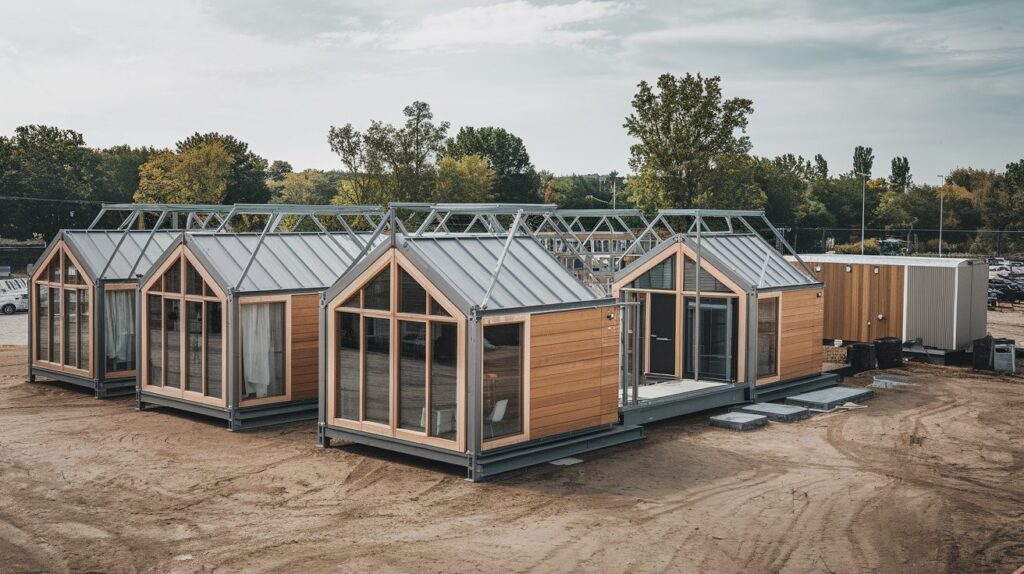
Modular vs. Traditional Construction: Which Option Is Right for You?
In recent years, the debate of modular vs. traditional construction has gained momentum, attracting homeowners, builders, and architects to rethink how buildings are constructed. Both methods offer unique advantages, and it is crucial to understand their differences to make an informed decision. In this article, we will explore these differences to help you determine which construction method might best suit your needs.
The traditional construction process is time-tested and widely accepted. However, modular construction is gaining popularity due to its speed and cost-efficiency. Let’s dive deeper into the mechanics of each method and how they meet modern building challenges.

Understanding Modular Construction
What is Modular Construction?
Modular construction refers to the process where a building is constructed off-site in sections, known as modules. These modules are then transported to the intended site and assembled quickly to create a complete structure. This technique allows for precise manufacturing and efficient assembly.
Advantages of Modular Construction
Modular construction brings numerous advantages, particularly in terms of speed and sustainability. Since modules are manufactured in a controlled factory environment, weather-related delays are minimized. Additionally, energy-efficient modular homes are often a result of this method as factories focus on precision and waste reduction.
Challenges in Modular Construction
Despite its benefits, modular construction faces some challenges, including transportation logistics and limited design flexibility. Transporting large modules to the site can sometimes be cumbersome and may incur additional costs. Furthermore, design options may be constrained by the modular approach.
Exploring Traditional Construction
What is Traditional Construction?
Traditional construction involves building directly on the construction site, employing a series of sequential steps such as foundation pouring, framing, and finishing. This method offers more design flexibility and customization opportunities.
Advantages of Traditional Construction
A significant advantage of traditional construction is its adaptability. Customized designs can be implemented easily, catering to specific homeowner preferences. Moreover, on-site construction allows for fewer transportation-related issues.
Challenges in Traditional Construction
Traditional construction often encounters weather-related delays, extending project timelines significantly. The on-site method also results in increased material and labor costs that may not be present in modular approaches.
Environmental Impact of Construction Methods
Modular Construction and Sustainability
Modular construction is generally more environmentally friendly. Its factory-controlled environment reduces waste and enhances resource efficiency. Several initiatives focus on green modular construction, supporting environmentally safe building practices and lowering carbon footprints.
Environmental Considerations in Traditional Construction
Traditional construction tends to produce more waste and involves significant resources for on-site activities. However, incorporating sustainable practices like using recycled materials can help mitigate some environmental impact.
Cost Implications: Modular vs. Traditional
Cost Efficiency in Modular Construction
A significant benefit of modular homes is their potential for reduced construction costs. The efficiency of producing structures off-site in a controlled setting contributes to less waste and faster build times. To learn more about insurance for these homes, visit this modular home insurance guide.
Cost Factors in Traditional Construction
Traditional construction can be more expensive due to labor costs and extended build times impacted by weather. While potentially flexible on design, the financial demands can be significant.
Which Method Is Right for You?
Choosing between modular and traditional construction depends on various factors including budget, timeline, and environmental considerations. While low-carbon housing solutions are crucial in today’s climate-aware society, personal preferences play important roles in decision making. For more insights, check out this article on low-carbon housing.

Frequently Asked Questions
Is modular construction more cost-effective?
Yes, modular construction is generally more cost-effective due to its controlled manufacturing process, reduced labor costs, and less waste.
Can traditional construction be environmentally friendly?
Yes, traditional construction can incorporate sustainable practices by using recycled materials and implementing energy-efficient designs to reduce its environmental impact.
How does modular construction affect energy efficiency?
Modular homes built in controlled environments often showcase superior energy efficiency due to precision in manufacturing, which supports sustainability goals.
For further understanding of construction methods and innovations, visit the in-depth resources from this external modular construction site.
This article contains affiliate links. We may earn a commission at no extra cost to you.